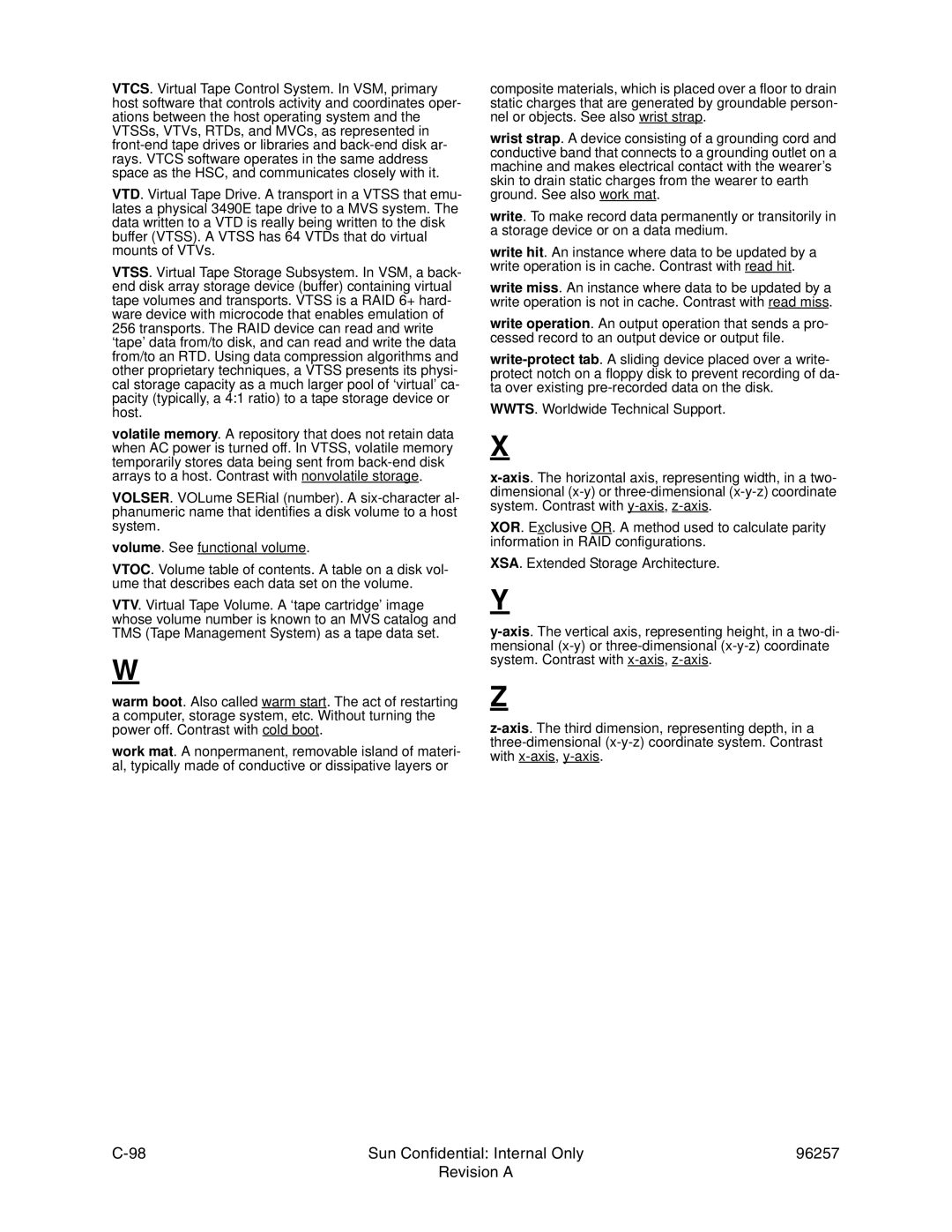VTCS. Virtual Tape Control System. In VSM, primary host software that controls activity and coordinates oper- ations between the host operating system and the VTSSs, VTVs, RTDs, and MVCs, as represented in
VTD. Virtual Tape Drive. A transport in a VTSS that emu- lates a physical 3490E tape drive to a MVS system. The data written to a VTD is really being written to the disk buffer (VTSS). A VTSS has 64 VTDs that do virtual mounts of VTVs.
VTSS. Virtual Tape Storage Subsystem. In VSM, a back- end disk array storage device (buffer) containing virtual tape volumes and transports. VTSS is a RAID 6+ hard- ware device with microcode that enables emulation of 256 transports. The RAID device can read and write ‘tape’ data from/to disk, and can read and write the data from/to an RTD. Using data compression algorithms and other proprietary techniques, a VTSS presents its physi- cal storage capacity as a much larger pool of ‘virtual’ ca- pacity (typically, a 4:1 ratio) to a tape storage device or host.
volatile memory. A repository that does not retain data when AC power is turned off. In VTSS, volatile memory temporarily stores data being sent from
VOLSER. VOLume SERial (number). A
volume. See functional volume.
VTOC. Volume table of contents. A table on a disk vol- ume that describes each data set on the volume.
VTV. Virtual Tape Volume. A ‘tape cartridge’ image whose volume number is known to an MVS catalog and TMS (Tape Management System) as a tape data set.
W
warm boot. Also called warm start. The act of restarting a computer, storage system, etc. Without turning the power off. Contrast with cold boot.
work mat. A nonpermanent, removable island of materi- al, typically made of conductive or dissipative layers or
composite materials, which is placed over a floor to drain static charges that are generated by groundable person- nel or objects. See also wrist strap.
wrist strap. A device consisting of a grounding cord and conductive band that connects to a grounding outlet on a machine and makes electrical contact with the wearer’s skin to drain static charges from the wearer to earth ground. See also work mat.
write. To make record data permanently or transitorily in a storage device or on a data medium.
write hit. An instance where data to be updated by a write operation is in cache. Contrast with read hit.
write miss. An instance where data to be updated by a write operation is not in cache. Contrast with read miss.
write operation. An output operation that sends a pro- cessed record to an output device or output file.
WWTS. Worldwide Technical Support.
X
XOR. Exclusive OR. A method used to calculate parity information in RAID configurations.
XSA. Extended Storage Architecture.
Y
Z
Sun Confidential: Internal Only | 96257 | |
| Revision A |
|
